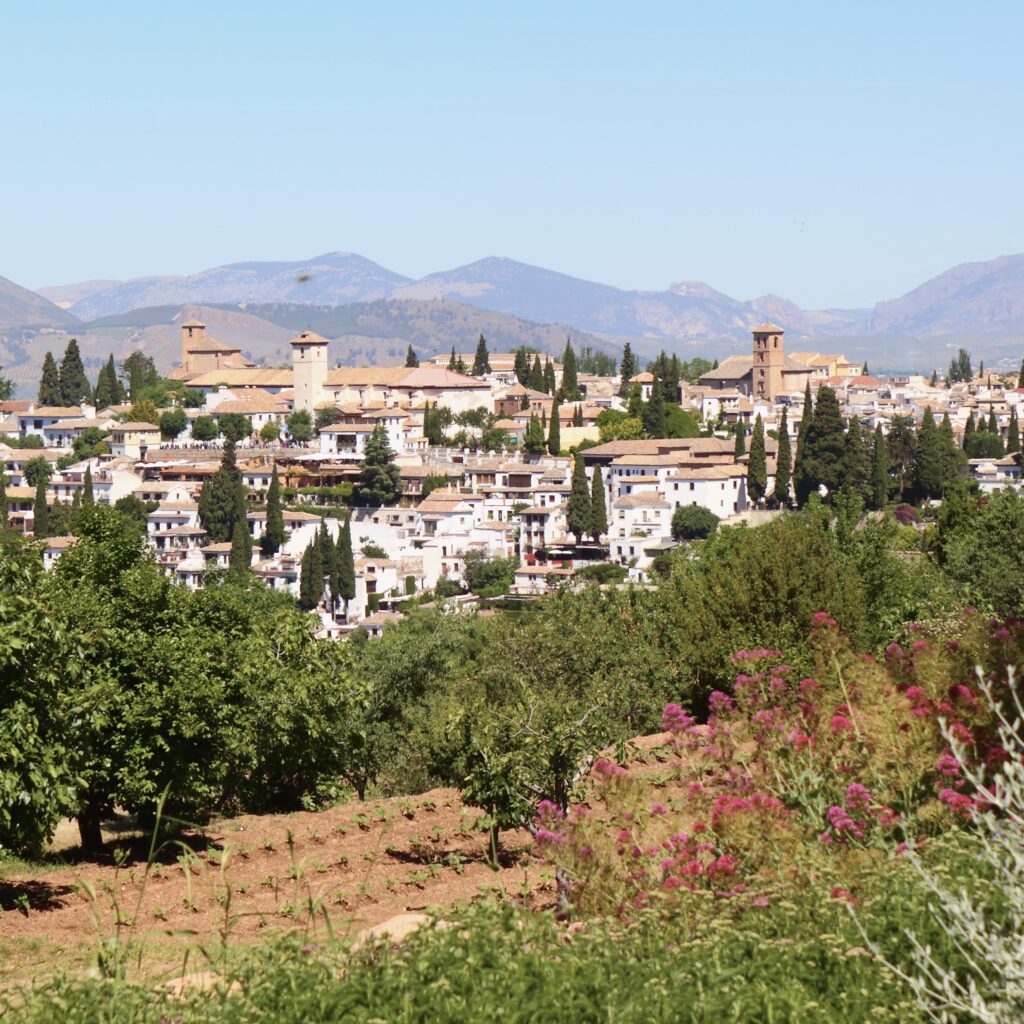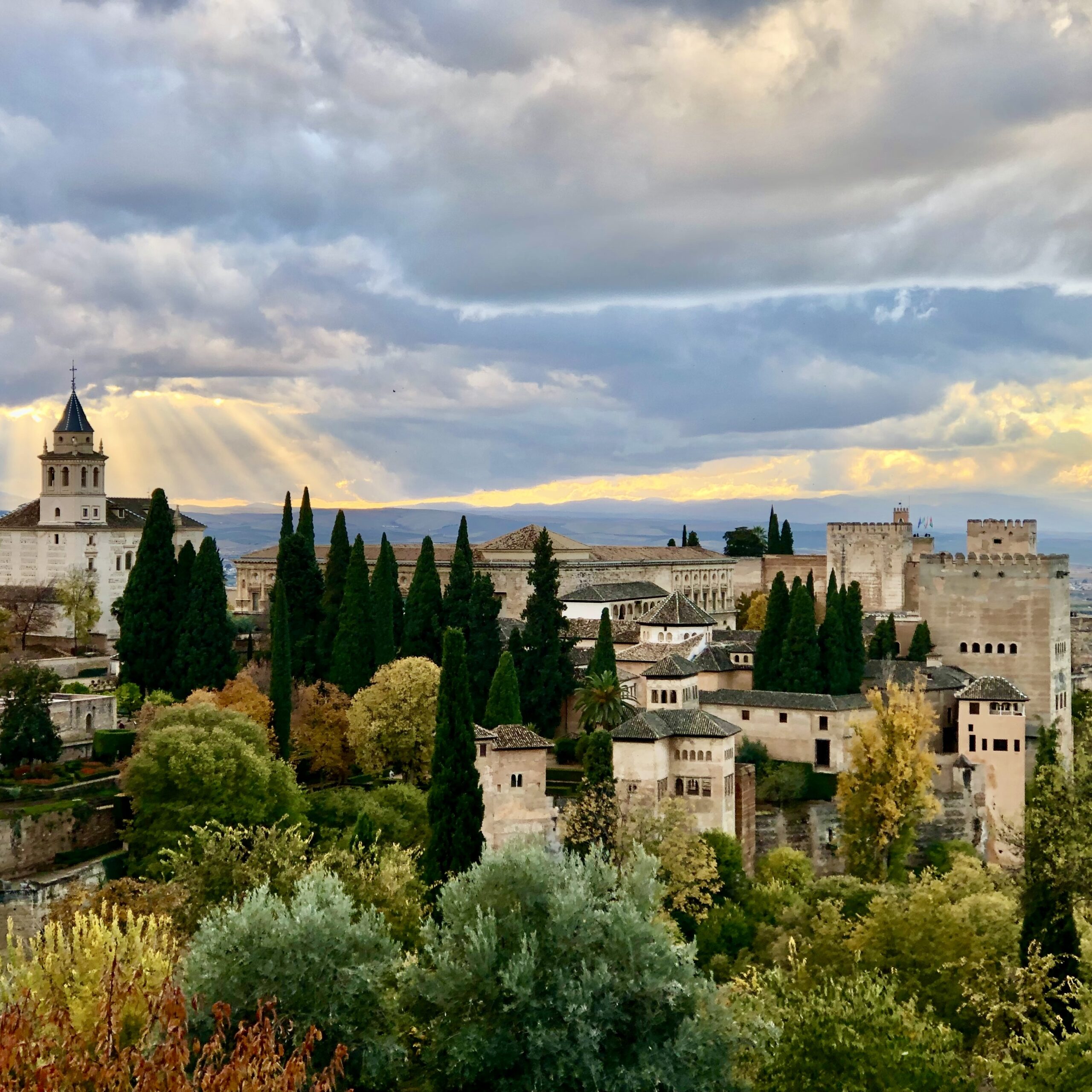Table of Contents
Gastronomy of Al-Andalus
Gastronomy of Al-Andalus is one of the most remarkable legacies from Nazari KIngdom.
Modern western cuisine would be very difficult to understand without it, as well as being a key factor in Mediterranean cuisine.
The Al-Andalus was the name used to refer to all lands governed by Muslims, that were part of the Visigothic kingdom: the Iberian Peninsula.
By the time the Muslims arrived in Roman-Gothic Hispania, they found the food scene in Al-Andalus to be less than attractive.
Land was poor in resources, hence food was limited and lacking in variety; based almost exclusively on cereals and grapevines.
Similarly to the rest of the European continent, where the cultivation of fruit and vegetables was almost nonexistent.
Against this background, the Umayyad leaders in al-Andalus encouraged agricultural development.
The changes that the Muslims were introducing into Hispano-Gothic agriculture, as well as affecting cultivation systems and products, brought significant nutritional innovations.
Andalusians believed nutrition as well as digestion to be totally healing only if pleasure, enjoyment and appetite were present while eating.
Even developed a system where dishes are served in a specific order, just as we still do today: soups and broths first, followed by hors d’oeuvres, meat and fish, and finally desserts.
The classical Christian food tradition was based on meat, bread and wine, but the Muslim introduced novel eating habits.
A taste for spices and condiments emerged as a way of adding attractiveness to senses.
Vegetables, pulses, spices, rice, citrus fruits and even sugar cane were essential ingredients in the gastronomy of Al-Andalus, creating the most delicious recipes still preserved today.
By the Middle Ages, Muslims had spread to the Peninsula, developing a cul “good eating” culture and encouraging agricultural development.
Irrigation systems were perfected, countless new species were introduced incouranging large-scale cultivation.
Gastronomy of Al-Andalus, vegetables, pulses and grains

Since people of al-Andalus had fresh vegetables throughout the year this product gained special importance.
They were served alone or as a side dish to meats, soups or fish, with a huge assortment of different recipes.
Cooked as unctuous mixtures, such as mashed beans or green peas, grilled and in stews or in the form of salads.
Lettuce, watercress, cress, crests, jaramagos and all kinds of edible wild herbs were richly dressed with a delicate olive oil was a must in Gastronomy of Al-Andalus.
Also beans, spinach, leeks, onions, celery, carrots and artichokes are just some of the vegetables that were grown throughout Al-Andalus.
A great variety of legumes were also consumed, and the airy feeling they produce used to be corrected by the use of thyme, oregano or cumin.
Chickpeas, lentils and broad beans could be served in a dozen ways: each of them was very nutritious and a significant part of the Andalusian diet.
In fact the original name of the beans, ‘al-lubiya’, is still used.
Cereals were still important to the Andalusians, although they were not their main food.
Darmak, the white flour, was the one of choice, although they also ate a lot of juškār, a kind of coarse, unground red flour.
It was usually made into bread or, as was popular throughout the medieval world, into porridge.
Wheat flour was also used to make pasta. Noodles ‘fidaws‘ from the Arabic verb ‘fidear’ meaning to grow were a popular dish.
However, the most appreciated usage was in the semolina flour, to prepare the famous couscous, a Berber dish, introduced by the Almohads in the 13th century.
Another important element of Mediterranean cuisine, rice.
Cooked in large pots slowly heated, mixing fish and spices, it could be the origin of the beloved paella.
Gastronomy of Al-Andalus, meat, spices and sweets

The Andalusians often ate in the street, in fast-food stalls abundant at souks, which cooked in public.
It was common to consume food while strolling through the streets or in front of shops and houses.
The regulations governing the daily market included some rules and allowances, usually of a religious nature.
Anti-fraud and food hygiene controls were imposed, enforced by the almotacén, a public authority figure, ensuring the merchants were compliant.
The almotacén monitored weights and measures, pricing and cleanliness.
In the souks the spice stalls form a colorful scene: the red paprika, the beige cumin, the yellow turmeric, the green anise seeds.
Spices were fundamental in Gastronomy of Al-Andalus, used for everyday food, fragrances for perfumes and also as medicine.
Meat, fish and vegetables were enhanced by the use of spices, creating flavors that were unknown at the time, proof of the exquisite cuisine developed in Al-Andalus.
Beef, lamb, goat and rabbit, as well as poultry and venison, were the most consumed by the Moors, stewed with honey, saffron and cinnamon to achieve a tender and appetizing texture.
Spiced minced meat to make the famous lamb and veal sausages and meatballs.
Also dairy products played an important role in the Andalusian diet.
Goat’s milk was the most widely consumed, in fact it was considered to enhance feminine beauty.
From thick butter, to fresh cheese or even curd mixed with honey, milk was used as a substitute for oil and in pastries.
Andalusian confectionery has a special influence on today’s Spanish cuisine.
Almond, pistachio and pine nut sweets, flavored with orange blossom and rose water and dipped in honey, take us straight back to antiquity, to the streets and souks of al-Andalus.
Legendary desserts and sweets that even today continue to delight us with their exquisite flavor.
Gastronomy of Al-Andalus, ancient recipes still delight us

“The main cause of the preservation of health is food, for if it is used properly, it preserves the health of man and repairs the damage done to the body.”
In commemoration of the World Food Day I would like to share with you an authentic recipe from the Gastronomy of Al-Andalus, and one of the most typical dishes from Granada:
Aubergines with honey
Eating aubergines with sugar cane honey is typical in Andalusia, especially in Granada.
A recipe with a long history, originating from the Gastronomy of Al-Andalus.
A unique combination of flavors that you will enjoy from the first bite and very easy to prepare.
Simply cut the aubergines into thin slices, batter them and fry them in very hot olive oil.
When they are crispy on the outside, remove them from the oil, add the honey on top and enjoy this authentic Andalusian dish.
When visiting Granada you will find mouthwatering dishes that have been passed down from generation to generation, adding greatly to the essence of Mediterranean cuisine and culture.
Enjoying the most delicious Gastronomy of Al-Andalus is to embark on an inspiring journey with flavors that take you back to antique times. A feast for the senses that you cannot miss.
Contact me and let’s discover together the exciting gastronomical Nasrid heritage in Granada and its tastiest routes.




Comment (0)